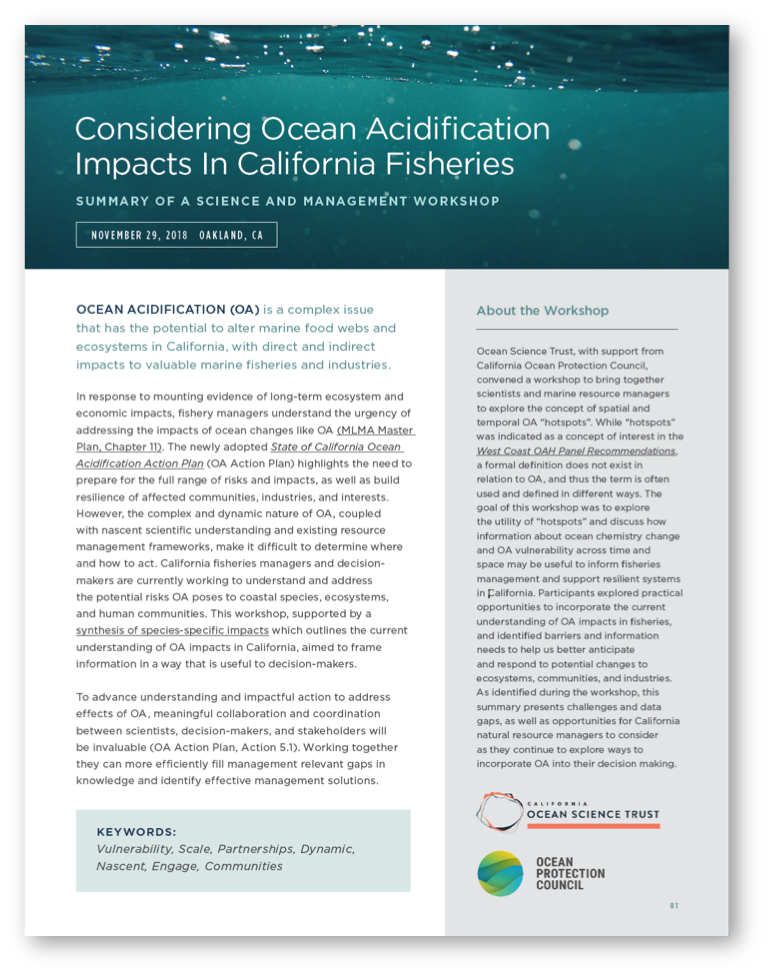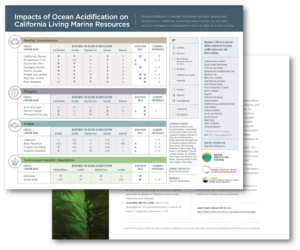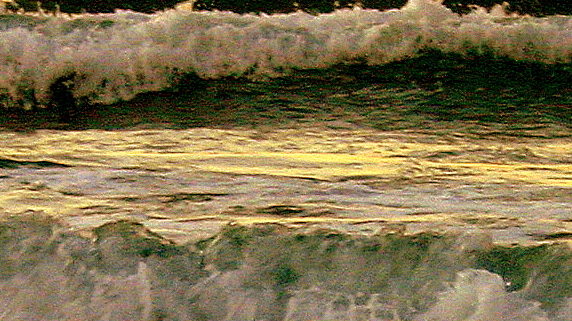 Workshop Summary: Considering OA Impacts in California Fisheries
Workshop Summary: Considering OA Impacts in California Fisheries
This workshop explored OA “hotspots” and how information about ocean chemistry change and OA vulnerability across time and space may be useful to inform fisheries management and support resilient systems in California.
This summary presents challenges and data gaps, as well as opportunities for California natural resource managers to consider as they continue to explore ways to incorporate OA into their decision making.
 Infographic: Impacts of OA on California’s Living Marine Resources
Infographic: Impacts of OA on California’s Living Marine Resources
January 2019
A summary of the latest research on ocean acidification (OA) impacts to important species and ecosystems in California, from crab to squid, rockfish to urchins. This tool provides a tangible illustration of our current knowledge to support decision-makers in prioritizing efforts and resources to address OA impacts.
Ocean Science Trust, working closely with scientists at UC Davis Bodega Marine Lab, the Ocean Protection Council (OPC) and other partners, undertook this synthesis to help identify data gaps and prioritize where to allocate resources to further increase understanding of OA impacts to California fishery resources.
This work was inspired by a similar effort by the Alaska Ocean Acidification Network. This new California infographic is another step in illuminating potential impacts along the entire West coast.





